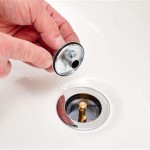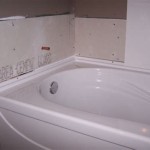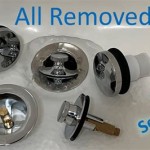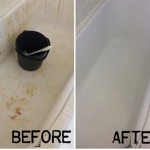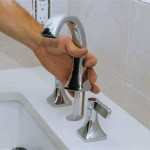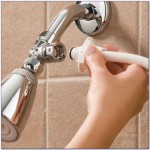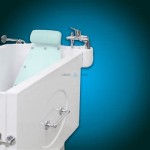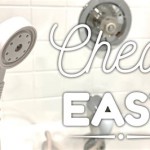What Is The Average Cost Of Bathtub Reglazing?
Bathtub reglazing, also known as refinishing or resurfacing, offers a cost-effective alternative to replacing an old, worn, or damaged bathtub. Instead of undergoing a full bathroom renovation, reglazing provides a fresh, new appearance for the tub at a fraction of the cost. Understanding the factors that influence the average cost of bathtub reglazing is crucial for homeowners considering this option.
The cost of bathtub reglazing is not a fixed number. It varies depending on several elements, including the type of material the tub is made of, the extent of the damage, the location of the property, and the professional selected for the job. This article offers a comprehensive exploration of the average costs associated with bathtub reglazing, the factors that affect pricing, and what to expect during the process.
Factors Influencing the Cost of Bathtub Reglazing
Several factors contribute to the overall cost of bathtub reglazing. A careful consideration of these factors will help in understanding the price variations and making informed decisions.
Material of the Bathtub: The material of the existing bathtub significantly affects the reglazing cost. Common bathtub materials include porcelain, cast iron, acrylic, and fiberglass. Porcelain and cast iron tubs, known for their durability, typically require greater preparation and specialized techniques, leading to higher reglazing costs. Acrylic and fiberglass tubs, being more susceptible to damage, may require extensive repairs before reglazing, also impacting the price.
Extent of Damage: The condition of the bathtub plays a crucial role in determining the cost of reglazing. Minor chips, scratches, and stains are relatively easy to repair and do not significantly increase the overall cost. However, tubs with extensive rust, deep gouges, cracks, or leaks will require more extensive repairs, such as patching, filling, and smoothing. These additional repairs will consequently increase the labor and material costs.
Size and Type of Bathtub: The dimensions of the bathtub and its style (standard, clawfoot, jacuzzi, etc.) also contribute to the cost. Larger tubs require more materials and labor, resulting in a higher price tag. Complex designs, such as those found in clawfoot tubs or jacuzzi tubs with jets, may also necessitate additional time and specialized techniques, thereby influencing the cost.
Labor Costs: Labor costs are a significant component of the bathtub reglazing price. Professionals charge based on their experience, expertise, and the complexity of the job. Highly skilled technicians who guarantee their work and have a proven track record will generally command higher rates. The duration of the project also impacts labor costs. Extensive repairs or intricate detailing will naturally require more time, leading to increased labor expenses.
Location: The geographic location of the property also affects the cost of bathtub reglazing. Prices tend to be higher in metropolitan areas due to higher living costs and greater demand for services. Material costs may also differ based on regional availability and transportation expenses. Obtaining quotes from local reglazing professionals is important to understand the prevailing rates in a specific area.
Preparation and Protection: Proper preparation is crucial to ensure a successful and long-lasting reglazing job. This includes thoroughly cleaning the bathtub, removing any existing caulking, and masking off surrounding areas to protect them from overspray. Extensive preparation work, such as removing old paint or sealant, can increase the overall cost. Ensuring adequate ventilation and taking necessary safety precautions also contribute to the expense.
Materials Used: The quality of the reglazing materials significantly affects the cost and longevity of the refinished surface. Higher-quality epoxy or polyurethane coatings offer greater durability, resistance to chipping and scratching, and a smoother, more aesthetically pleasing finish. While these materials may be more expensive upfront, they provide a better long-term value by reducing the need for frequent repairs or re-reglazing.
Additional Services: Some homeowners may require additional services, such as plumbing repairs or tile work, in conjunction with bathtub reglazing. These services will further increase the overall cost of the project. It is important to discuss these needs with the reglazing professional and obtain a comprehensive quote that includes all anticipated expenses.
Average Cost Ranges for Bathtub Reglazing
The average cost of bathtub reglazing typically falls within a range, reflecting the variables discussed earlier. While it's impossible to provide an exact cost without a detailed on-site assessment, general estimates provide helpful guidelines.
Low End (Basic Reglazing): The low end of the cost range typically includes basic reglazing services for standard-sized bathtubs with minimal damage. This might encompass cleaning, light etching, and the application of a single coat of reglazing material. The price for this type of service typically ranges from $300 to $400.
Mid-Range (Standard Reglazing): The mid-range cost includes more extensive preparation, such as minor chip and crack repairs, thorough cleaning, and the application of multiple coats of higher-quality reglazing material. This range is suitable for tubs with moderate wear and tear. The cost for standard reglazing usually falls between $400 and $600.
High End (Premium Reglazing): The high end of the cost range covers comprehensive reglazing services for heavily damaged bathtubs or those requiring specialized finishes. This may involve extensive rust removal, deep crack repairs, professional-grade materials, and multiple coats for maximum durability and aesthetics. The price for premium reglazing can range from $600 to $1000 or more, depending on the specific requirements.
Additional Costs to Consider: These estimated ranges are for the basic reglazing process itself. Homeowners should also factor in potential additional costs, such as plumbing repairs, tile work, or the removal and disposal of old fixtures. It's imperative to obtain a detailed, written quote that outlines all potential expenses before proceeding with the project.
The Bathtub Reglazing Process
Understanding the process involved in bathtub reglazing can help homeowners better anticipate the project and evaluate the value of the service.
Preparation: The first step involves thorough preparation of the bathtub and surrounding area. The technician will clean the tub to remove any dirt, soap scum, and mineral deposits. Any existing caulking is carefully removed to ensure a clean surface for the new finish. The surrounding areas, such as tiles, walls, and fixtures, are meticulously masked off to protect them from overspray. Proper ventilation is also established to minimize the risk of inhaling fumes.
Repair: The technician will address any existing damage to the bathtub, such as chips, cracks, or rust. These imperfections are filled with specialized fillers or patching compounds. The repaired areas are then sanded smooth to create a seamless surface for the reglazing material.
Etching: Etching involves creating a slightly rough surface on the existing bathtub finish. This roughening provides a better bonding surface for the reglazing material, ensuring a durable and long-lasting finish. Acid etching or mechanical sanding may be used to achieve the desired texture.
Priming: A primer is applied to the prepared bathtub surface. The primer acts as a bonding agent between the existing surface and the new reglazing material. It also helps to seal any remaining imperfections and prevent moisture from penetrating the finish.
Reglazing: The reglazing material, typically an epoxy or polyurethane coating, is applied to the primed surface using a spray gun. Multiple thin coats are often applied to achieve a smooth, even, and durable finish. The technician will carefully control the spray gun to avoid drips, runs, or uneven coverage.
Finishing: After the reglazing material has dried and cured, the masking is removed, and the surrounding area is cleaned. New caulking is applied around the edges of the bathtub to seal the seams and prevent water damage. The technician may also buff the surface to enhance the shine and smoothness of the finish.
Curing Time: It is essential to allow the reglazed bathtub to fully cure before using it. The recommended curing time typically ranges from 24 to 72 hours, depending on the specific reglazing material used. It is imperative to follow the manufacturer's instructions to ensure the finish properly hardens and achieves maximum durability.
In summary, the average cost of bathtub reglazing is influenced by a variety of factors. Understanding these factors allows homeowners to make informed decisions and budget effectively for the reglazing process. Obtaining multiple quotes from reputable professionals and carefully evaluating their experience and guarantees is crucial for ensuring a successful and cost-effective outcome.

How Much Does Reglazing Cost Newshine Bathtub Refinishing

How Much Does Bathtub Refinishing Cost 2025

Bathtub Refinishing Costs Maryland Tub Tile

How Much Does It Cost To Refinish A Bathtub 2025 Data

Tub Resurfacing Ballpark Estimator Custom And Tile

How Much Does It Cost To Refinish A Bathtub 2025 Data

How Much Does Bathtub Refinishing Cost 2025 Data Angi

How Much Does Bathtub Refinishing Cost Family Handyman

How Much Does It Cost To Refinish A Bathtub 2025 Data
Bathtub Refinishing In Los Angeles Ca Costs 07 2025 Homeyou
Related Posts

